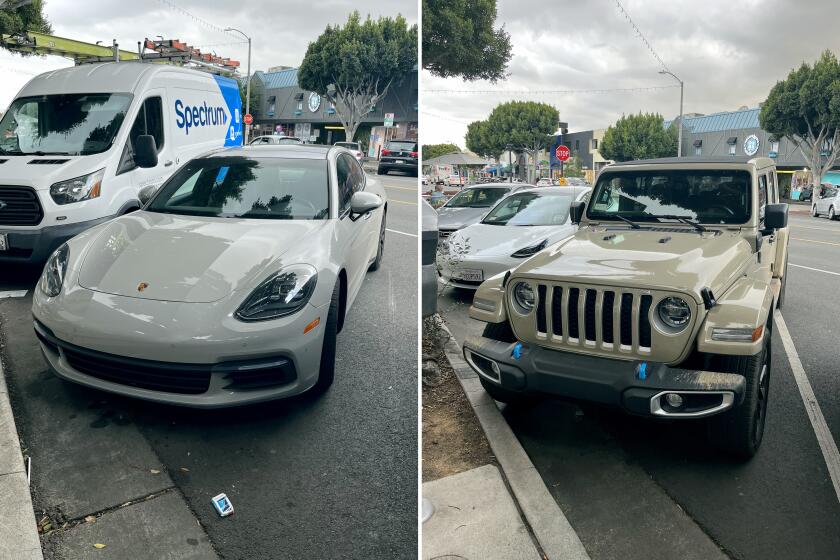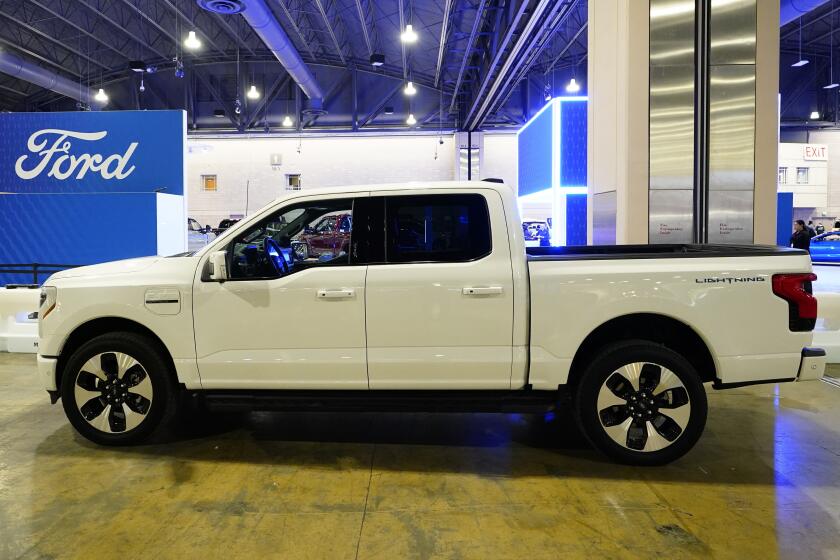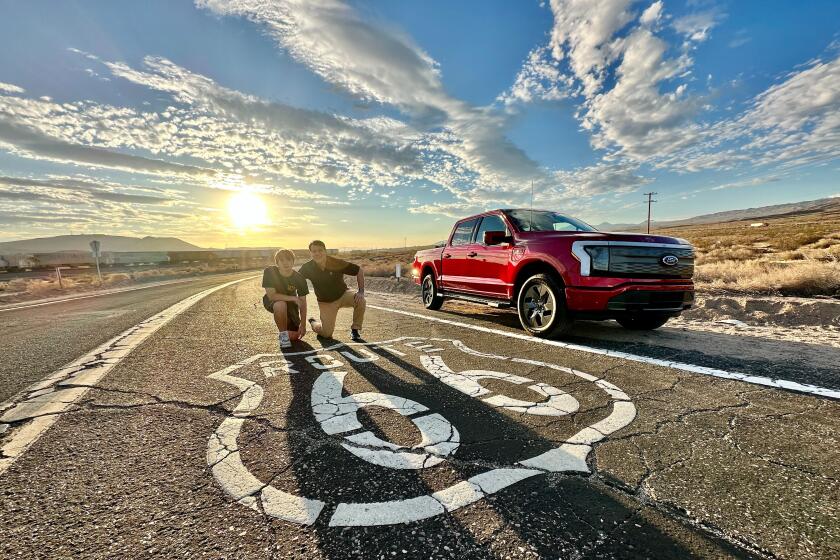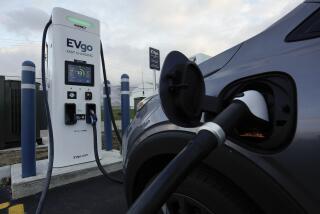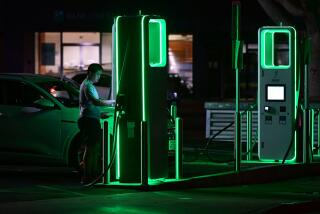Is 2024 a good time to buy a vehicle? Here’s the projection
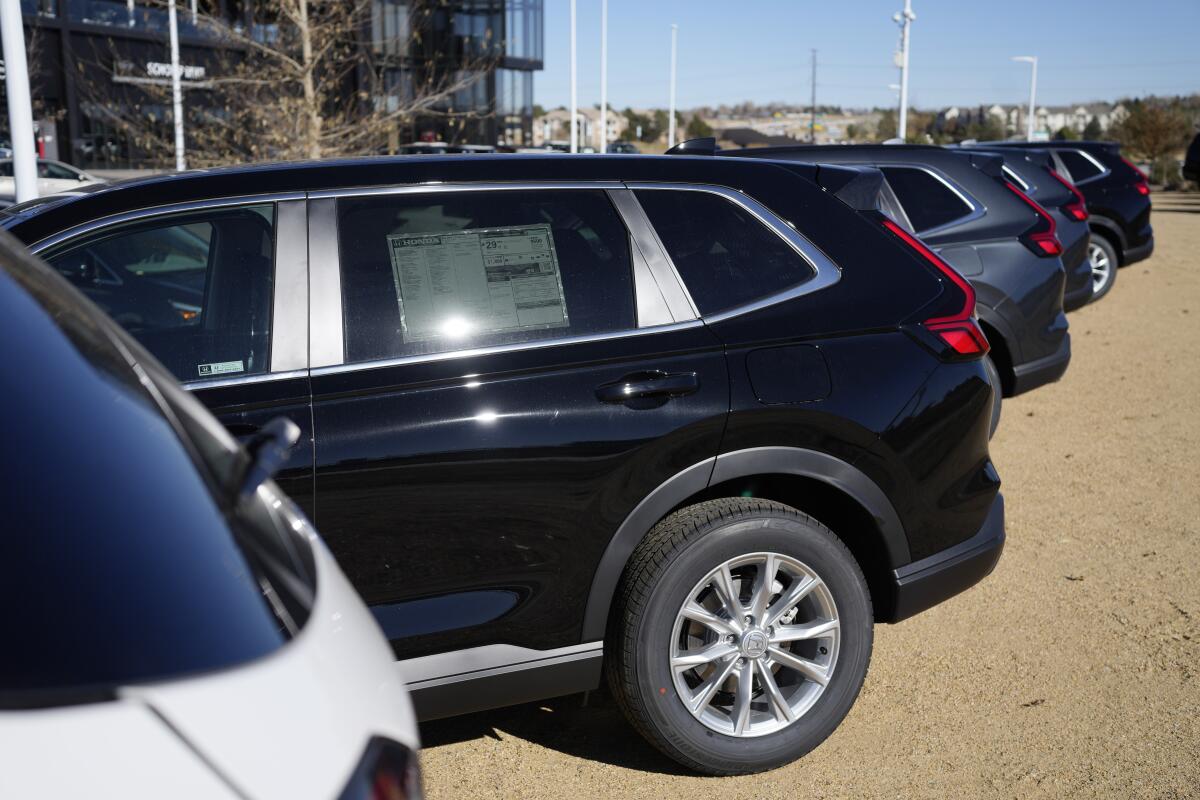
Consumers looking for new vehicles should have better luck in 2024, with inventory levels expected to be higher, putting downward pressure on prices, experts say.
New-vehicle inventory is finally expected to hit pre-pandemic levels in 2024 at 3 million, three times what was available during the semiconductor supply shortage, according to Cox Automotive, an auto services company. But even with more vehicles on dealer lots, analysts at Cox expect sales will increase less than 2% year over year to 15.6 million, below the 17 million figure reached in 2019.
Automakers, meanwhile, will continue to add more electric options to the market, even though they’ve pulled back on some of their EV plans and goals as consumers continue to lean on internal-combustion engine products and hybrids.
Jonathan Smoke, chief economist at Cox, said there’s “no question” 2024 will be a better time to buy.
“The best that we’ve seen since 2019,” he said. “When you look at the supply levels, it’s literally the most vehicles we’ve had available since early in 2021. We’re starting to see recovery in incentive levels or more discounting, and so as a result, not only are you more likely to find something on the market, you’re more likely to get a better deal.”
Over the last decade, muted paint colors have taken over the automotive world. The understated shades, which are popular for sports cars and utility vehicles, will cost you.
A drop in interest rates in 2024 would make conditions for buyers even better. In December, after raising rates repeatedly to stave off inflation, the Federal Reserve held its benchmark rate steady for the third consecutive time and is expected to make multiple cuts in 2024. The benchmark rate of about 5.4% is at its highest level in 22 years, producing costly mortgages and auto loans.
The messaging from the Fed that it’s done raising rates came as a relief to dealers stuck with expensive vehicles, especially electric ones, on their lots.
Jim Seavitt, owner of Village Ford in Dearborn, Mich., said his dealership is selling as many new vehicles as in 2022, which he described as a strong year, though the used market has lost its luster as Ford Motor Co. has improved incentive and program offerings for new models. Still, his lot is full with two months of inventory that he says is costing him an “arm and a leg” because of high floorplan loan costs.
Seavitt said he’s cut back on EV orders. A lease program that can put the Mustang Mach-E at $499 per month has helped demand for the SUV, but he sees demand drying up on the F-150 Lightning truck.
“They’re over $80,000,” said Seavitt, who drives a Mach-E. “You don’t get a tax break. People have range fear. Electric overall, I think, is really overstimulated. Anyone who wanted one got one in the past two years. They moved a little too fast [into EVs] and put too much into it.”
The number of electric vehicle models eligible for a consumer tax credit of as much as $7,500 fell sharply as new rules from the Biden administration kicked in Jan. 1.
Electric vehicle sales in the United States are expected to hit records in 2024 after surpassing 1 million in 2023. EV sales should reach more than 1 million this year, too, and account for more than 10% of total sales, according to Cox. Hybrid models will help by pushing the share of electrified vehicle sales to nearly 24% of the market in 2024, up from 16% this year, according to Cox.
Hybrids, Smoke said, “are the sort of compromise in the evolution of electrification. They seem to have gotten a second wind.”
Ford has been pulling back on its EV plans, cutting $12 billion in planned investments, delaying the opening of one battery plant in Kentucky, shrinking the size of another in Michigan and decreasing production volume of EVs. Ford also has cut back on requirements for EV infrastructure and training for its dealers.
Seavitt, the Dearborn dealer, signed up to be an “elite” certified EV dealer and has the equipment for DC fast charging and the transformer needed to support it. Parts shortages, however, are holding up installation of switching gear to connect the transformer to the electric box. It won’t be done until March.
“Every dealer from every brand is buying them,” Seavitt said. “They’re flooded with demand.”
Ford CEO Jim Farley says the Ford F-150 Lightning, the world’s first all-electric mass-market pickup truck, represents ‘the tip of the spear’ in Ford’s EV strategy.
Amid the challenges with EV adoption, Ford executives are emphasizing hybrids.
“Everyone is clamoring for the hybrids,” Seavitt said, noting the EVs are often second or third vehicles for families. “I can turn those [hybrids] in two to three days.”
As a result, Maverick compact trucks are flying off the lot, he said. Without sedans, the Ranger midsize truck and Bronco Sport SUV have also proved popular for their lower price points.
“People are looking for $250, $275” in monthly payments, Seavitt said. “You can’t get a $40,000 car for what you pay for Comcast. They’re used to paying what they did when they came in two years ago. They come back to the market and say, ‘Whoa — $400?’ That’s what they should’ve been paying two years ago. There’s a reset in the market.”
The pivot to battery-powered products will continue at General Motors Co. after some hiccups in 2023 caused a low level of EV deliveries, something Chief Executive Mary Barra expressed disappointment about.
GM experienced difficulties related to battery module assembly, but in late November Barra said the company had “made substantial improvements both to the process and to the organization responsible for this work. In 2024, we expect significantly higher Ultium EV production and significantly improved EV margins.”
Buyers of new and used cars can soon make a down payment with free money from Uncle Sam — if they qualify.
While GM is sticking with a goal to be all-electric by 2035, the company has said it’s evaluating bringing back a hybrid option to the U.S. market.
“We have the [hybrid] technology,” Barra said in early December at an Automotive Press Assn. event in Detroit. She added that she still believes that “you want to move to EVs as quickly as you can ... but we have the technology. We’ll continue to look at where the market is, where the regulatory environment is.”
This year will be an important time for GM’s electrification strategy, with multiple EV launches and production expansions, including the 2025 Escalade IQ priced starting at $130,000 and the 2024 GMC Sierra EV, which costs $108,695 for the Denali Edition 1 model.
In the sea of expensive EVs, customers are demanding affordability. The gas-powered Buick Envista that starts at $22,400 is a major draw, said Jeff Laethem, owner of Ray Laethem Motor Village in Detroit.
“It’s in a price range affordable on a retail payment,” he said. “It has personality, and it has just the right amount of features. I have seen on multiple occasions now somebody comes in for that vehicle ... who would never be coming in normally, and then they end up looking at the Buick Encore that’s a touch bigger, but they wouldn’t have come in if not for the Buick Envista.”
Plug-in hybrid cars are an often overlooked alternative to full electric vehicles. But will they help the warming world? It’s controversial.
Harder sells are vehicles in the mid-$40,000 range, he said, like the GMC Terrain and Jeep Compass and Cherokee SUVs. He tries to find discounts on those to speed up sales since they’re more expensive to keep on the lot.
“The mid-price segment doesn’t have a lot of people who can afford it,” Laethem said. “Those who can afford it are going to buy a more expensive vehicle. It’s the lost middle area that concerns me.”
If those vehicles turn electric without increases in consumer demand for them, there could be bigger issues for dealers, he said.
“It’s an infrastructure problem,” Laethem said. “We like hybrids. We like the plug-in hybrids Jeep has.”
Stellantis launches its first all-electric vehicles for North American retail customers in 2024, including the Dodge Charger muscle car, Jeep Wagoneer “S” and Recon SUVs, and the Ram 1500 REV as well as the 1500 Ramcharger, a vehicle that runs fully off a battery but has an engine generator on board to keep the battery charged.
In the meantime, dealers say the Jeep 4xe plug-in hybrids have been popular. They’re waiting expectantly for solid-state batteries that promise greater energy density and longer ranges to come to market.
“Until such time, it makes the most sense to be in the hybrid segment,” said Kevin Farrish, dealer principal of a dealership in Fairfax, Va., and vice chair of the Stellantis National Dealer Council. “That’s what our customers are asking for.”
An EV makes sense, especially for drivers traveling under 100 miles per day, said Randy Dye, owner of a dealership in Daytona, Fla.
“We always have to be careful,” he said. “We can maybe suggest what people can consider what to buy. When you try to force it, it gets really, really rocky.
“We’re in the middle of a transition in the industry that is just remarkable. You have to be fired up. We need to make sure we just don’t do it as speedily as we’re trying to. Let the customer tell us how much of this they want.”
The Detroit Three are heading into 2024 with fresh contracts with United Auto Workers union after a 46-day targeted plant strike. The deals for the automakers’ hourly workers include 25% in base wage increases through April 2028, cost-of-living adjustments and a reduction in the time it takes for a new employee to reach top wages.
Dan Ives, managing director and senior equity analyst at Wedbush Securities, says 2024 “is probably the most important year for the U.S. auto industry in decades because coming out of the UAW debacle, it’s Ford, GM and Stellantis figuring out who they’re going to be. This is the year where the EV strategy accelerates into the second half of the decade or hits a wall.”
Experts at Edmunds.com Inc., a vehicle information website, say that while the transition to battery electric vehicles is slowing, hybrids are becoming a more comfortable option for Americans concerned about high prices and spotty infrastructure to support full EVs. Edmunds data show hybrid market share increased to 9.7% in November 2023 from 4.9% the year prior, representing 99% growth. In that same period, EVs increased 25% in share.
But Ivan Drury, director of insights at Edmunds, noted that the growth in hybrids will be held back some in 2024 because there aren’t enough models.
“It’s going to be difficult for the hybrids; even though the demand is there, we don’t have a lot of new launches coming out,” Drury said.
Edmunds is forecasting 15.7 million new vehicles will be sold in 2024, a 1% increase from its estimate of 15.5 million new vehicle sales in 2023.
Mark Trudell, general manager at Extreme Chrysler Dodge Jeep Ram in Jackson, Mich., said business slowed toward the end of 2023: “It’s a lot of people who need to buy cars, or just are waiting until things kind of improve.”
He pointed to the new arrival of the Dodge Hornet, a crossover that starts at $31,400, as a welcome addition to the lineup.
“COVID years were different,” he said. “That’s not the norm. You have to compare to ’18 and ’19 and go from there. It’s sluggish right now, but it’s been worse.”
Hall and Noble write for the Detroit News.
